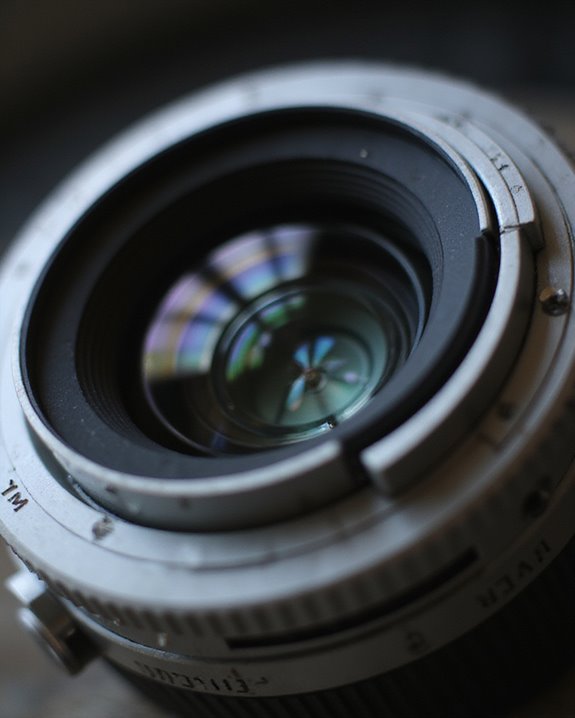Camera lenses command premium prices due to multiple production factors. High-purity optical glass costs $50-$500 per element, while precision manufacturing requires tolerances measured in micrometers. Complex designs often incorporate 15+ elements with multi-layer coatings that achieve 99.9% light transmission. Extensive quality control, cleanroom assembly conditions, and specialized labor further inflate costs. Small production runs limit economies of scale, with initial design investments reaching $75,000. These technical requirements explain the substantial investment photographers make.
Key Takeaways
- Exceptional material purity and rare earth components like lanthanum drive costs up to $500 per glass element.
- Complex designs featuring 15+ precision elements require extensive engineering investments ranging from $1,500 to $75,000.
- Manufacturing tolerances measured in micrometers demand specialized equipment and cleanroom environments with strict temperature control.
- Multi-layer anti-reflective coatings using advanced deposition techniques can add $10-$100 per lens for optimal light transmission.
- Research, development and patent licensing costs must be recouped through premium pricing strategies.
The Optical Glass Purity Factor
The exceptional purity of optical glass stands as a fundamental factor in the high cost of quality camera lenses. Through decades of Glass Evolution, manufacturers have developed increasingly stringent standards for optical clarity, directly influencing performance outcomes in professional photography. The Purity Science behind lens production requires extensive quality control measures to eliminate microscopic imperfections that would otherwise create chromatic aberrations and reduce image sharpness.
High-quality optical glass with precise refractive indices must be meticulously produced, handled, and processed, with each stage adding significant expense to the final product. Material sourcing presents another challenge, as accessing raw materials with consistent properties often involves complex supply chains and specialized suppliers. These purity requirements, essential for meeting industry standards and achieving maximum light transmission, ultimately transform into higher pricing structures for consumers seeking professional-grade lenses.
Multi-Element Design Complexity
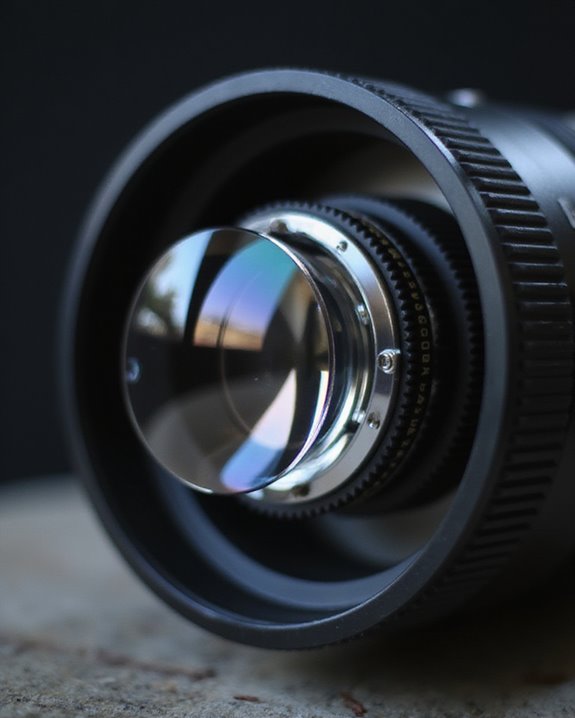
Beyond glass purity, modern camera lens engineering demands intricate multi-element designs that substantially impact production costs and final pricing. Today’s premium lenses typically contain more than 15 precisely crafted elements, each strategically positioned to correct specific optical aberrations including spherical, chromatic, and coma distortions. This complexity necessitates advanced Design Simulation software to model how light interacts with each surface before manufacturing begins. Additionally, the integration of complex multi-element structures often requires precise manufacturing tolerances, further increasing production challenges and costs. The pursuit of superior Image Sharpness requires not only ideal element configuration but also sophisticated mechanical systems for focusing and zooming operations. Internal focusing mechanisms, often utilizing ultrasonic motors, demand precise movement control while maintaining perfect alignment between elements. Additionally, each glass-to-air interface potentially introduces flare and reflection issues, requiring specialized coatings. The mathematical formulas governing focal length calculations become exponentially more complex with each additional element, further elevating production challenges and costs.
Precision Manufacturing Tolerances
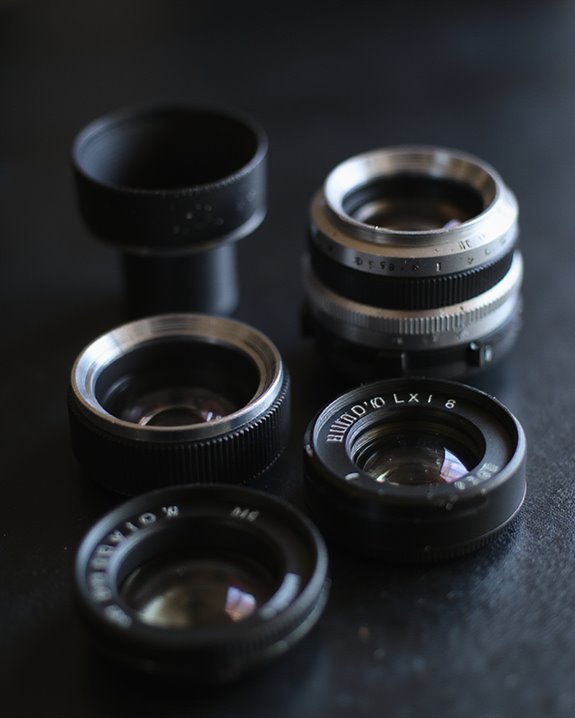
Manufacturing precision stands at the heart of lens production costs, where tolerances measured in micrometers determine whether a lens delivers exceptional performance or mediocre results. Dimensional accuracy in diameter specifications must meet stringent standards, typically ranging from +0.00/-0.10 mm for standard quality to +0.000/-0.010 mm for high-precision applications, ensuring proper alignment between optical and mechanical axes. Achieving such tight tolerances often requires high-precision optical grinding equipment and meticulous quality control processes to maintain consistency across production batches. Curvature precision represents another critical manufacturing challenge, with radius of curvature tolerances as tight as 0.01% for premium lenses. These exacting requirements necessitate specialized equipment, advanced manufacturing processes, and skilled technicians who can consistently achieve the required specifications. Center thickness, which directly impacts optical path length, must be controlled within +/-0.010 mm in high-quality lenses, requiring meticulous attention during fabrication and quality control procedures, substantially driving up production costs.
Specialized Coating Technologies
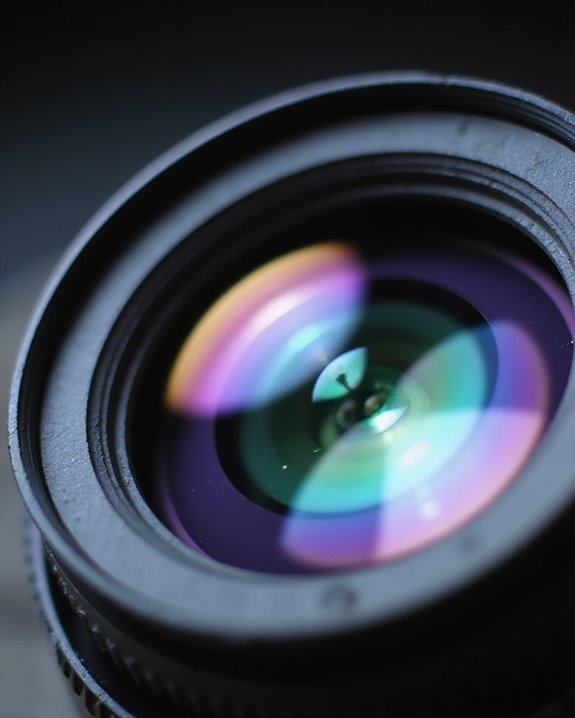
Modern specialized coating technologies represent perhaps the most significant contributor to lens pricing among optical manufacturers, transforming what would otherwise be ordinary glass elements into precision light-management systems. Coating history reveals an evolution from basic single-layer applications to today’s complex 10+ layer designs that achieve remarkable 99.9% light transmission across UV to near-infrared spectra. Additionally, the use of multi-layer coatings and advanced materials like silica aerogel nanotechnology and fluorine compounds substantially increase manufacturing complexity and cost, while specialized application techniques such as plasma-assisted deposition require substantial capital investment. Market trends indicate growing demand for lenses featuring hydrophobic, anti-abrasion, and application-specific customizations that command premium pricing. These sophisticated coating processes demand clean-room environments, precision equipment, and highly skilled technicians, explaining why professional-grade lenses with superior optical coatings maintain their position as premium photographic investments.
The Hidden Cost of Quality Control
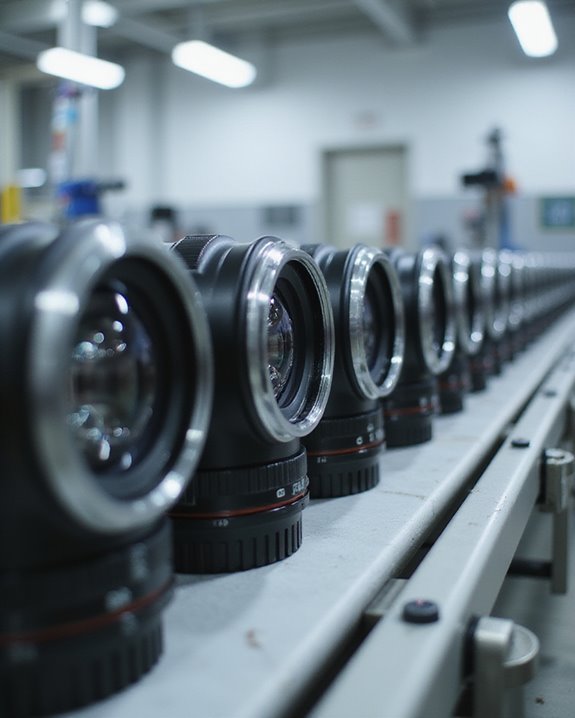
The hidden costs of quality control in camera lens production often remain invisible to consumers despite greatly impacting final pricing. Manufacturers employ sophisticated Quality Assurance protocols, including MTF bench testing, slanted line evaluation, and precise optical design assessment to guarantee each lens meets rigorous performance standards. These processes require specialized equipment and trained technicians, substantially affecting Cost Analysis calculations.
Modern lenses undergo extensive tolerancing procedures to evaluate how manufacturing variations impact overall performance, frequently necessitating redesigns to maintain optical integrity. High-precision testing equipment and calibration systems for autofocus and image stabilization represent substantial investments for manufacturers. Additionally, ensuring consistency across production units requires thorough benchmarking standards and quality control software like Imatest, which allows companies to establish acceptable performance thresholds while optimizing yield—all factors ultimately reflected in consumer pricing.
Skilled Labor in a Mass Production World
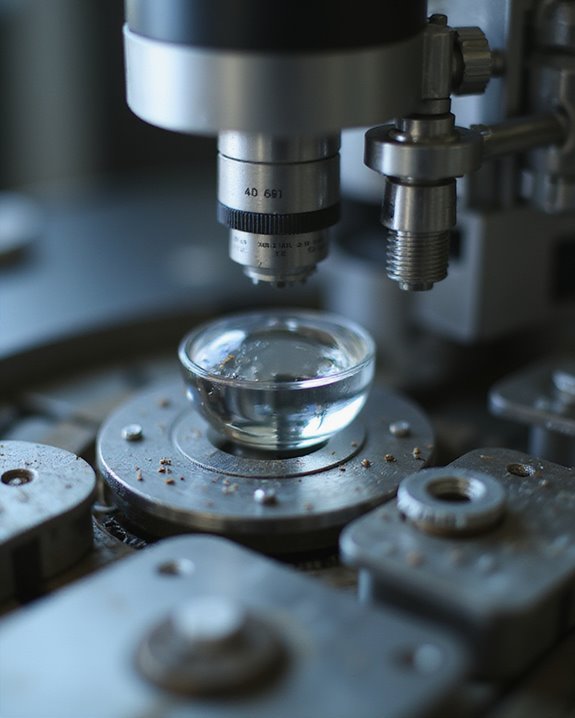
Despite widespread automation in many industries, camera lens production remains deeply rooted in specialized human craftsmanship, creating a curious paradox in today’s mass manufacturing landscape. Traditional techniques like pitch-pellet adhesion and manual lens positioning corrections persist alongside modern CNC machinery, requiring workers with highly specialized skills developed over years of apprenticeship.
Labor shortages have become increasingly problematic as fewer graduates pursue optical manufacturing careers, creating significant wage pressures across the industry. Skilled technicians command premium salaries for their expertise in critical processes like final polishing to achieve λ/4 surface accuracy and aspheric lens manufacturing. While manufacturers face competition from global markets with lower wage structures, the specialized nature of optical work—where automation bottlenecks remain in precision steps—ensures that human expertise continues to be an essential, and expensive, component of quality lens production.
Research Investment and Patent Licensing
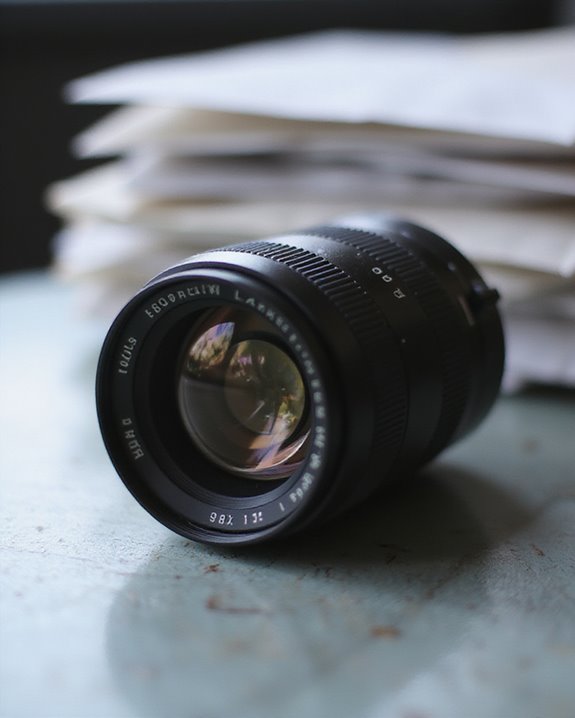
Behind every premium camera lens stands millions of dollars in research and development costs, forming a substantial portion of the final retail price consumers ultimately pay. Major manufacturers allocate substantial Research Budgets toward multi-year development cycles, specialized optical simulation software, and rigorous testing infrastructures that guarantee each lens meets exacting performance standards across varied environmental conditions.
Patent Royalties constitute another significant expense, with manufacturers paying licensing fees for proprietary technologies like nano-crystal coatings, optical stabilization systems, and specialized glass formulations. Companies maintain defensive patent portfolios to protect their optical innovations while simultaneously engaging in cross-licensing agreements to access competitors’ technologies. This complex web of intellectual property rights, combined with tight manufacturing tolerances requiring ISO-certified facilities, creates a substantial cost foundation that inevitably transfers to consumers through premium pricing strategies designed to recoup these extensive investments.
Small Production Runs vs. Economy of Scale
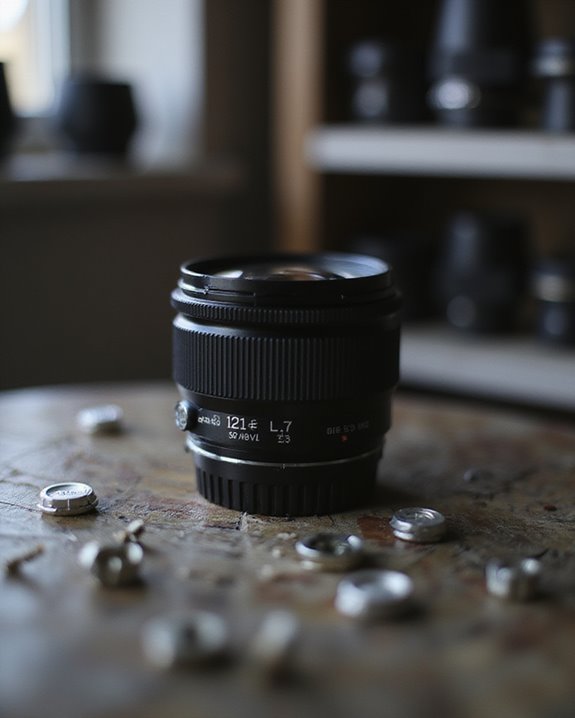
Unlike mass-produced consumer goods, camera lenses suffer from dramatically higher manufacturing costs when produced in small batches, creating a fundamental pricing challenge for manufacturers and consumers alike. The economic impact becomes evident when examining unit costs, which can plummet from $1,000 for single custom lenses to under $50 when produced in quantities of 100 or more.
Batch costs include substantial tooling investments, ranging from $0-$30,000 per lens element, which cannot be efficiently amortized across limited production runs. Volume impact manifests through manufacturing complexities, where specialized equipment for atypical sizes (below 3mm or exceeding 50mm) demands precision machinery and additional labor time. Multi-element assemblies, common in higher-quality camera lenses with 3-6 elements, compound these setup expenses and require specialized labor, further limiting economies of scale typically achieved with mass-produced items.
The Real Price of Optical Innovation
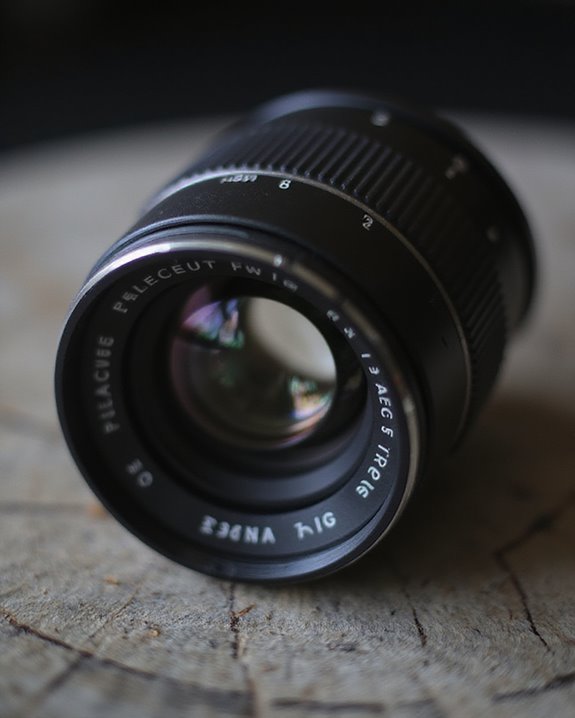
What truly drives the substantial cost of premium camera lenses extends far beyond basic manufacturing expenses into the domain of technical innovation and precision engineering. Initial design investments ranging from $1,500 to $75,000 fund the complex optical engineering required to maintain competitive design trends in the industry. The development of aspheric elements, proprietary glass formulations, and nano coating technologies represents significant research costs that manufacturers must recoup through pricing strategies.
Marketing impact also factors into lens pricing, as manufacturers invest in establishing premium brand positioning that justifies higher price points. This marketing reinforces the value proposition of features like weather sealing, image stabilization, and precision tolerances measured in microns. These innovations require specialized cleanroom assembly processes and quality control testing that guarantee each lens meets rigorous performance standards throughout its operational lifespan.
Environmental Controls and Manufacturing Conditions
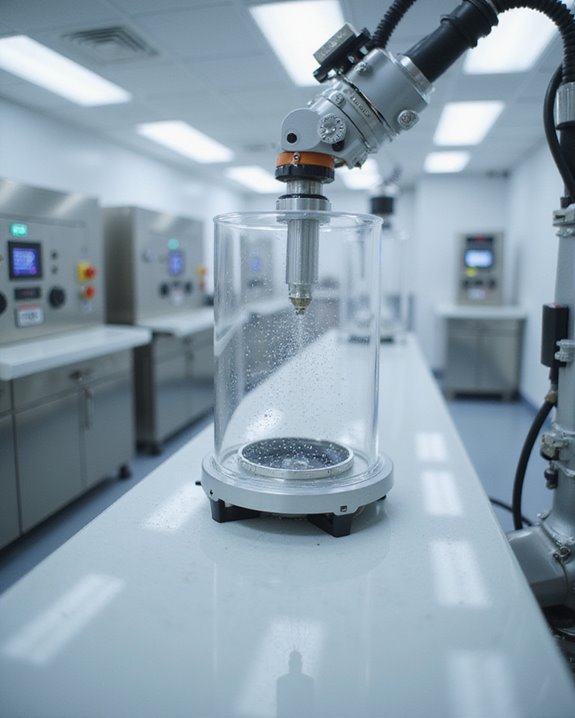
The precision manufacturing environment for premium camera lenses represents a substantial cost factor that consumers rarely consider when evaluating price points. Modern lens production requires stringent cleanroom standards to prevent particulate contamination that could cause optical defects, with temperature and humidity regulation systems preventing material degradation during critical manufacturing stages.
Eco-friendly facilities implement substantial investments in environmental technologies, including wastewater filtration systems that reduce heavy metal emissions by 99.99%, and closed-loop processes preventing thousands of kilograms of alloy waste annually. Resource conservation initiatives further impact production costs, with water recirculation cutting consumption by 80% in deblocking stages and low-waste tooling optimizing material usage throughout grinding and polishing operations. Additionally, manufacturers increasingly adopt energy-efficient HVAC systems and electromagnetic heating to reduce carbon footprints while maintaining the ISO-compliant conditions necessary for optical excellence.
Frequently Asked Questions
Are Cheaper Third-Party Lenses Optically Comparable to Name-Brand Versions?
The Sigma Art 35mm f/1.4 lens revolutionized Lens Alternatives by matching Canon’s L version in Quality Testing. Modern third-party options often deliver comparable optical performance to name-brand counterparts, with occasional variances in consistency.
How Long Should a Professional Camera Lens Typically Last?
Professional camera lenses typically last 15-30+ years depending on lens maintenance and usage frequency. Properly cared for manual lenses can exceed this timeframe, while electronic components in autofocus lenses may fail earlier despite optical integrity.
Do Weather-Sealed Lenses Justify Their Premium Price?
Weather-sealed lenses justify their premium prices for photographers frequently working in challenging environments. Studies show high user satisfaction due to superior sealing effectiveness, providing long-term protection that outweighs initial investment costs for professionals.
How Much Do Marketing and Brand Prestige Inflate Lens Prices?
Marketing hype and brand perception dramatically inflate lens prices. Prestigious manufacturers charge 20-40% premiums for identical optical performance. Consumers pay for the name, reputation, and associated status rather than proportional quality improvements.
Can Discontinued Vintage Lenses Outperform Modern Equivalents at Lower Costs?
Vintage lenses can deliver distinctive bokeh and color rendering that some photographers prefer over modern equivalents. While technically less sharp, their character often outperforms clinical modern optics for artistic applications at substantially lower costs.




